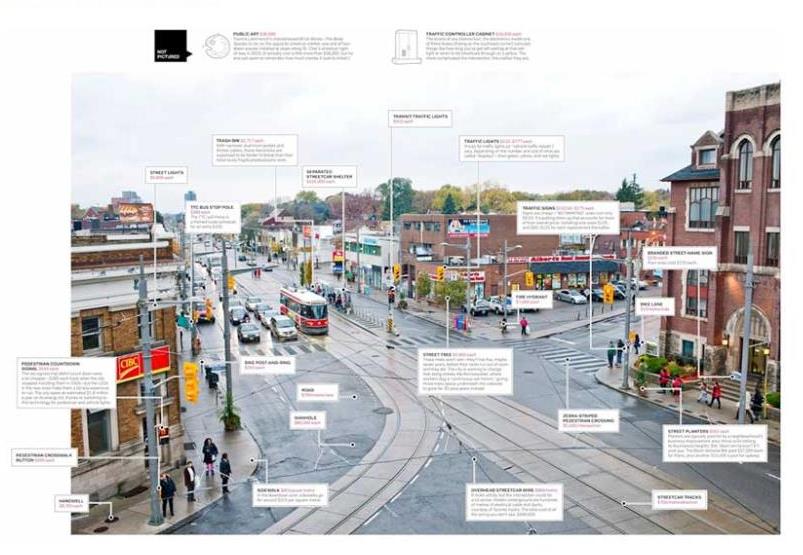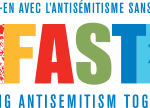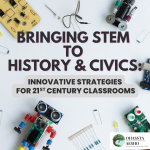
By Zoe Flatman
I have been teaching grade 12 Economics for over 25 years and as curriculum has changed and we have moved to actually Analysing Economic Issues, in combination with the rise of digital media in the last decade and a half, the skill of assessing sources has become absolutely critical. I used to use a great assessing sources activity originally found on the CFEE website, but it had aged in both content, and its focus on traditional newspaper format. I decided to revamp it in order to introduce more current content and bring in the digital media component. I have used a variety of sources (including Youtube videos, Tweets and on-line news articles) to build a scaffold for fact checking. While I have used this in my Economics classes, it could easily be done in any Social Science or History class by just substituting the topic/sources. The point is to use curriculum, in this case looking at the question, “Are Canadians taxed at an appropriate rate?” to develop the critical 21st century competencies that students will need. So how do my students do this?
Please send your ideas, activities, and helpful reflections to zoe.a.flatman@gmail.com The next Rapport deadline is May 20, 2019
I begin the minds-on with a short, viral video clip- in this case, Historian Rutger Bregman at Davos and his famous, “taxes, taxes, taxes” phrase. I ask students to respond using a Tug-of-War strategy (Visible Thinking Routines). This is a great way to get students thinking about issues from different sides and posing questions for further learning. It can be revisited later and viewpoints can be refined.
The next step is to get into the activity proper. I have the students look at a tweet from a Toronto newspaper Toronto Sun on Twitter along with selected comments. Part of the learning involves ethical use of digital media, or “netiquette”, so I will return to this in the consolidation. Students have a chance to see the types of social media posts, comments, and replies, that do and don’t advance constructive dialogue, as well as seeing different viewpoints and [Economic] perspectives.

Students are going to mark a spot on a continuum based on their impressions. They are asked whether they agree, or disagree with the econmomic perspective of the Tweet. They will return to this continuum at each stage to reassess their thinking and see if/how it changes throughtout the investigation.
Strongly Agree Agree Neutral/Unsure Disagree Strongly Disagree
Thus far, they are making judgements about a complex issue (the appropriate level of taxation) based on previous knowledge, opinions and/or very limited conclusions. This is important because we too often take a position on emotional grounds, using limited information. They have seen/heard two brief, conflicting viewpoints based on an edited (for length) video clip and a Tweet. It is time for them to dig into the issue and begin to deconstruct the conclusions being presented. This is done in stages.
Students first go to the full newspaper article Toronto Sun and work through a simple fact/opinion exercise. They underline, or highlight facts and opinions using different colours. They will judge whether the article has more facts or opinions (based on the prevalence of each colour) and this will lead to a preliminary judgement about the validity of the article. We want to stimulate discussion about the impact of impressions/beliefs on our position on an issue- perhaps revisit our agree/disagree continuum used in assessing the tweet. Has our thinking changed? Why, or why not?
We then want to proceed to the study Fraser Institute that is being summarised in the article. This step allows us to assess how accurately the facts and opinions of the report are reflected in the newspaper article. The original activity, that I have adapted, used a phrase that I love- the author spoke about “fact-like statements”. It is a phrase which is used to describe what might look on the surface like a fact (usually a number/statistic), but upon further investigation is dubious at best (deceptive at worst). For example, are the numbers rounded to over or understate a fact? Are they taken out of context- perhaps ignoring contrary data in the same study? This is what we are really speaking about these days as mis/dis/mal-information.
The final stage of the activity is to look at a response article Press Progress. Students are given an alternative perspective and flaws in the original study methodology are examined. It gives an opportunity for students to revise their thinking not only on the topic, but on the nature and quality of sources. Given the data/number driven nature of the sources in economics, there is a temptation to accept their validity on face value. After all, numbers mean proof!? Students are encouraged to find 1 other, reliable source that supports each side of the argument. The preponderance of sources is also helpful to assess validity of viewpoints/perspective. How many times do students get frustrated that, “there are no sources to support my argument?” It might be an indication that the argument is weak/flawed!
The consolidation allows students to reflect on their learning and practice digital citizenship skills. I have them place their final mark on the original continuum and trace how their thinking has shifted over the activity. They explain how/why their thinking has changed, or not, over the course of the activity. Finally, I have them do one of two things. They craft a Tweet of 280 characters or less (they may include links to sources, or a longer original reflection) and a hashtag to summarise their new position on the issue. The other option is to have students post a short video (an elevator pitch, for example), Sketchnote, poem, or link to an original blog post to a shared space such as Flipgrid.
Responding in the form of a Tweet/ Twitter thread (written to the teacher, and peers, rather than posted on –line) provides a good bookend as it helps students to understand how to interact in an appropriate way in the on-line environment and brings the activity back to the start. However, it does not allow for differentiation. I like the Flipgrid format as it allows for differentiation, and student sharing of learning. The only drawback is that it doesn’t hit the netiquette piece as directly. It does ask students to use 21st century forms of communication so it just depends on your goals for the learning.
An exit ticket consisting of a 3-2-1- protocal is used to give feedback on the exercise and consolidate student thinking/learning. Throughout this activity, I use a variety of protocols to ensure that students are making their thinking visible and are reflecting and assessing as they progress.
If you would like to see the whole lesson plan you may view using the link provided Whole Lesson Plan
Zoe Flatman is a teacher with the Toronto District School Board currently seconded to Elections Canada. Zoe has taken over as the co-editor of Rapport.

